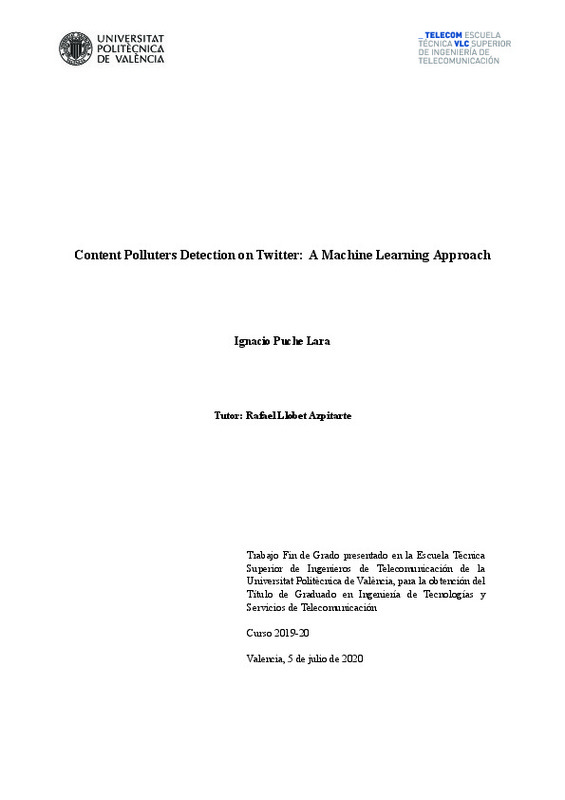JavaScript is disabled for your browser. Some features of this site may not work without it.
Buscar en RiuNet
Listar
Mi cuenta
Estadísticas
Ayuda RiuNet
Admin. UPV
Detección de contaminadores de contenido en Twitter: una aproximación basada en el Aprendizaje Automático
Mostrar el registro completo del ítem
Puche Lara, I. (2020). Detección de contaminadores de contenido en Twitter: una aproximación basada en el Aprendizaje Automático. http://hdl.handle.net/10251/152409
Por favor, use este identificador para citar o enlazar este ítem: http://hdl.handle.net/10251/152409
Ficheros en el ítem
Metadatos del ítem
| Título: | Detección de contaminadores de contenido en Twitter: una aproximación basada en el Aprendizaje Automático | |||
| Autor: | Puche Lara, Ignacio | |||
| Director(es): | ||||
| Entidad UPV: |
|
|||
| Fecha acto/lectura: |
|
|||
| Resumen: |
[ES] Uno de los principales usos diarios de internet son las redes sociales. En estas plataformas soncomunes las cuentas automatizadas no legítimas o también llamadas: ¿Contaminadores de Con-tenido¿. La existencia de dichos ...[+]
[EN] One of the main daily uses of the internet are social networks. On these platforms, there are com-monly automated non-legitimate accounts, the so-called ¿Content Polluters¿. The existence ofthese polluters is a problem ...[+]
|
|||
| Palabras clave: |
|
|||
| Derechos de uso: | Reserva de todos los derechos | |||
| Editorial: |
|
|||
| Titulación: |
|
|||
| Tipo: |
|
recommendations
Este ítem aparece en la(s) siguiente(s) colección(ones)
-
ETSIT - Trabajos académicos [2410]
Escuela Técnica Superior de Ingenieros de Telecomunicación







